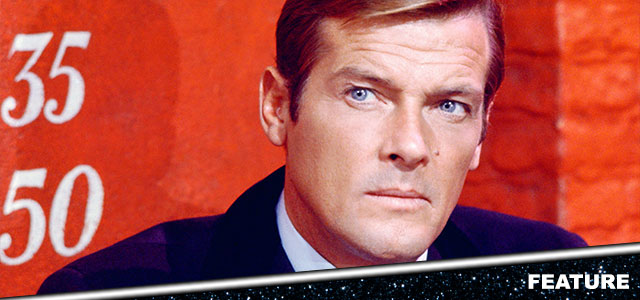
The 25th James Bond movie No Time To Die arrives in Cineworld in September, and we're counting down the days by revisiting all the 007 movies in chronological order of release.
In honour of Daniel Craig's swan-song as 007, we're taking a nostalgic trip back through time. This week: Roger Moore makes his Bond debut in Live and Let Die...
What is the story of Live and Let Die?
British MI6 agent James Bond/007 (Roger Moore) is dispatched to New York to investigate Kananga (Yaphet Kotto), dictator of the Caribbean island of San Monique. Kananga may well be linked to the mysterious deaths of three fellow MI6 agents across the globe.
Bond's investigations subsequently lead him to drug dealer Mr Big, and he eventually arrives on San Monique himself where he becomes embroiled in the island's history of voodoo. He makes contact with Kananga's psychic tarot reader Solitaire (Jane Seymour) – only for events to take ever-more twisted turns...
How did Live and Let Die get made?
At the start of the 1970s, an ever-changing world had forced significant changes within the James Bond franchise. The series had largely run on track from 1962's Dr No to 1967's You Only Live Twice, allowing actor Sean Connery to assert his stamp on author Ian Fleming's creation. Even to this day, Connery 's portrayal of 007 remains, for many, the definitive one.
However, disruption was caused by actor George Lazenby when he bailed on the series following 1969's On Her Majesty's Secret Service. Lazenby had been assured by his manager that Bond would very soon go out of date, and he subsequently turned down a lucrative seven-film contract. Producers Albert R. 'Cubby' Broccoli and Harry Saltzmann were therefore compelled to return to Connery, who made one more film, Diamonds are Forever, in exchange for a hefty salary and assorted creative demands.
Ironically enough, Lazenby's manager had correctly anticipated the challenges faced by the Bond movies. As attitudes towards race and gender shifted and altered through the pop culture kaleidoscope, the texture of the films was forced to change with it. This is certainly reflected in Live and Let Die, the second Bond movie of the 1970s, and one that distills the atmosphere of the era's 'Blaxploitation' cinema (movies that empowered black characters and audiences).
For the first time, a Bond movie explicitly reflected the pop culture concerns of the period through its casting, tone and storyline. This is something that would become increasingly apparent as the series continued – think of the kung fu element of The Man With the Golden Gun in 1974, or the acknowledgement of the collapse of the Cold War in 1995's Goldeneye. No longer could Bond operate in his own hermetically sealed universe – the character would have to continually adapt and reinvent himself if he wanted to survive in a competitive global marketplace.
Live and Let Die is a historic moment in the Bond franchise in that Roger Moore steps into the role for the first time. The actor had been favoured by Broccoli and Saltzman for both Dr No and On Her Majesty's Secret Service, but neither attempt to enlist him had been successful. After Connery turned down the opportunity to make Live and Let Die, Broccoli finally got Moore on board, defeating the hotly tipped Michael Billington to the part. (Billington was best known for cult Gerry Anderson series UFO.)
In-keeping with his popular 1960s TV series The Saint, Moore was determined to bring a new quality to the role of Bond. In sharp contrast to the masculinity and latent aggression of Connery, Moore played the part with a much lighter touch, his quips even deadlier than his fighting skills.
This Bond was capable of saying as much with a raised eyebrow as he was with a blast from a Walter PPK, and Moore's irreverent approach declared the onset of a more overtly tongue in cheek period in Bond history. Interestingly, however, Moore had past form with James Bond: in 1964 he played the character in comedy series Mainly Millicent. In many ways, it can be seen as an audition for his big screen interpretation of the world's greatest secret agent.
Live and Let Die hops between American locations in the gridlocked New York, and the steamy swamps and bayous of New Orleans and Louisiana, before moving over to the lush environments of the Caribbean. Broccoli and Saltzman therefore retained American screenwriter Tom Mankiewicz whose familiarity with USA characters and idioms had aided the script for Diamonds are Forever, itself mainly set in and around Las Vegas. Mankiewicz had also brought a determinedly tongue in cheek approach to Diamonds, which is very much evident in Live and Let Die. Barring a couple of sequences, it's hard to determine whether Bond is facing any kind of peril, a feeling that's amplified by Moore's self-consciously winking performance.
Mankiewicz drew on the contemporary successes of films like Shaft, fashioning African-American antagonists and henchmen who weren't concerned with world domination. Instead, the film's main villain, Kananga, is a drug dealer who disguises himself as a kingpin named Mr Big, operating inside the black community of Harlem in New York. Unlike any other Bond film, the movie also has an apparently supernatural undercurrent, chiefly in the form of Baron Samedi (memorably played by Geoffrey Holder) who holds sway over the island of San Monique. Despite this, the filmmakers resisted the temptation to make Solitaire an African-American character, sticking with Fleming's description of her as a white woman. Actor Jane Seymour, then best known for TV series The Onedin Line, was cast in the role.
Actor Yaphet Kotto, later to become even more famous in Alien, would later express displeasure with the script, citing a reliance on stereotypes. "There were so many problems with that script... I had to dig deep in my soul and brain and come up with a level of reality that would offset the sea of stereotype crap that Tom Mankiewicz wrote that had nothing to do with the Black experience or culture. The way Kananga dies was a joke, and well, the entire experience was not as rewarding as I wanted it to be. There were a lot of pitfalls that I had to avoid, and I did."
Amusing supporting performances come from Julius Harris as Tee Hee, an archetypal Bond henchman who has a hook in place of a hand. This makes for a memorable showdown aboard a moving train during the film's climax. And then there's Early Jolly Brown as Whisper, the raspy-voiced partner in crime who kills Bond's New York driver with a handily placed dart from a side mirror.
Live and Let Die is drawn from Ian Fleming's novel of the same name, although many cosmetic changes were made. For example, the keel-hauling sequence (dragging people through shark-infested waters) was ditched, only to appear later in 1981's For Your Eyes Only, again starring Moore. And the moment where Bond's CIA ally Felix Leiter is savagely mauled by a shark was also cut out, before making an appearance in Timothy Dalton movie Licence to Kill in 1989.
Leiter does make an appearance in Live and Let Die, albeit played by yet another actor. This time he's played by actor David Hedison, the only person to play the role twice. (He later appeared as the ill-fated Felix in Licence to Kill.) And although both M (Bernard Lee) and Moneypenny (Lois Maxwell) both appear, amusingly gate-crashing Bond's dalliance with Agent Caruso (Madeline Smith), Q (Desmond Llewelyn) is, unusually, nowhere to be seen.
At the time, Llewelyn was appearing in a TV series called Follyfoot, but had a contractual agreement with the makers to sit out several episodes in order to appear in Live and Let Die. However, Broccoli and Saltzman had already agreed to temporarily ditch the character, saying there had been too much emphasis on gadgets in recent Bond movies. Although Q's absence from the scene is odd, it does end with one of Moore's most infamous puns: as he uses a magnetic watch to unzip Caruso's dress, he cites it as, "Sheer magnetism, darling".
Live and Let Die contains some memorable location filming, including the infamous crocodile farm in Louisiana. The name of the farm's owner, Ross Kananga, informed the name of the film's villain, and gave rise to the classic sequence where a desperate 007 scampers over the backs of the beasts in order to escape. In fact, it was Kananga's suggestion for Bond to escape in this manner, and he performed this stunt himself, requiring five takes to complete it effectively (including one where a croc snapped at his heels and tore his trousers).
Filming in and around Harlem presented issues when the crew were forced to pay protection money to a local gang. When the money ran out, the crew were forced to use locations elsewhere in New York as stand-ins. And the celebrated Louisiana boat chase, shot in Irish Bayou, set a Guinness World Record for the longest-ever boat jump (34 metres). In the course of filming the scene, 17 boats were destroyed.
For better or worse, the tone of the (admittedly impressively staged) boat chase defined the tone of Bond for much of the next decade and a half. The presence of drawling, buffoonish Sheriff J.W. Pepper, played by actor Clifton James, was perhaps the broadest yet seen in a Bond movie, and signified much more of an emphasis on comedy. To the consternation of fans, he would appear again in Moore's next movie, The Man with the Golden Gun – evidence, as if it were needed, that the Sean Connery days were left far behind.
READ MORE
- No Time To Die and the 6 James Bond movies we never got to see
- 7 actors who could play James Bond after Daniel Craig retires
- Shaken and stirred! Daniel Craig's defining 007 moments
What music is on the Live and Let Die soundtrack?
In another concession to trends, Live and Let Die switched up its composer, as well as its Bond actor. Regular composer John Barry, who had arranged the classic Bond theme and defined the tone of the series, was sidelined working on musical Billy. Therefore, the producer of The Beatles, George Martin, stepped in, ensuring continued relevance with a 1970s youth audience.
Ex-Beatle Paul McCartney was hired to perform the title song with his group Wings, and it would become one of the defining anthems of the series. Impressed by Martin's recording and orchestration of the title track, he was chosen by Broccoli and Saltzmann to compose the entirety of the film score itself.
In-keeping with Barry's usual approach, Martin remains loyal to the song's melody throughout the underscore. He treats it to a variety of different variations, often fitting it around the funky, sultry stylistics of early-seventies 'Blaxploitation' cinema. Muted horns, guitars and bass clarinets given many scenes a moody allure, whereas other scenes explode in punchy orchestral action, including the explosive finale to the pivotal boat chase scene.
The music editing and spotting of the Live and Let Die score is especially impressive; the latter is defined as the moment where the music enters and exits a scene, a decision determined in early conversations by the director and composer. The first half of the boat chase is left unscored, allowing the roar of the engines to act as their own soundtrack. That means the music has more emotional impact when it finally does turn up, musically steering 007 to another enjoyable victory.
Surprisingly, the Bond theme itself only makes occasional appearances, although the Martin-scored variation at the end of the soundtrack album is a highlight. The composer takes the essence of the character and brings him roaring into the 1970s, a perfect synthesis of character mythology and contemporary relevance.
How was Live and Let Die received?
Live and Let Die was a commercial success, grossing $161 million against a $7 million budget. This made it the most profitable Bond movie since Sean Connery had bowed out with 1967's You Only Live Twice.
However, critical reaction to Moore's decidedly less serious Bond was mixed. This was encapsulated by the great Roger Ebert's review from the time. He stated that Moore "has the superficial attributes for the job: The urbanity, the quizzically raised eyebrow, the calm under fire and in bed". He also added that the film "doesn't have a Bond villain worthy of the Goldfingers, Dr. Nos and Oddjobs of the past".
However, modern day critical reaction is somewhat more favourable. Empire magazine wrote: "This is good quality Bond, managing to reinterpret the classic moves — action, deduction, seduction — for a more modern idiom without breaking the mould. On one side we get the use of alligators as stepping stones and the pompous pitbull of rootin' tootin' Sheriff Pepper caught up in the thrilling boat chase. On the other, the genuine aura of threat through weird voodoo henchman Tee Hee and the leaning toward — what's this? — realism in Mr Big's plot to take over the drug trade from the Mafia".
Regardless of his portrayal, Moore was here to stay. In fact, he was to become one of the longest-running Bond actors of all time, his tenure stretching up to 1985's A View to a Kill. Only Daniel Craig has superseded him, spanning 2006's Casino Royale to 2020's No Time To Die.
What was the next movie in the James Bond series?
The Man with the Golden Gun was the next Bond movie, released in 1974.
When is No Time To Die released in the UK?
No Time To Die is released on 30th September. Don't forget to tweet us your favourite James Bond movies @Cineworld.

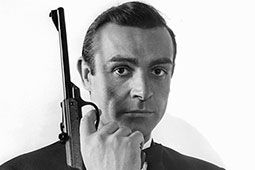
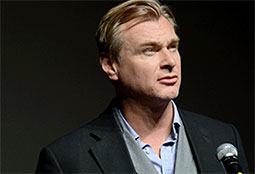
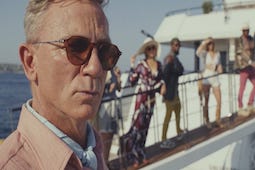
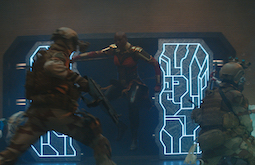
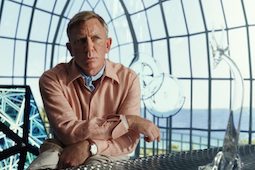
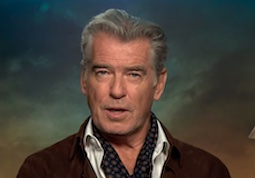
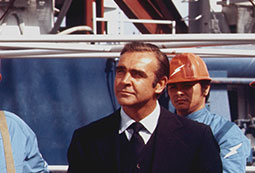
.jpg)


.jpg)
.png)






